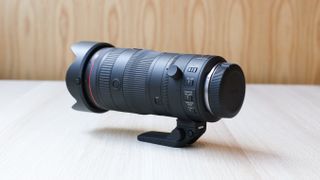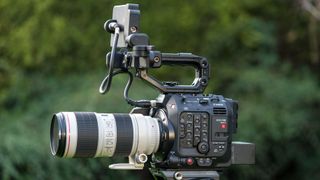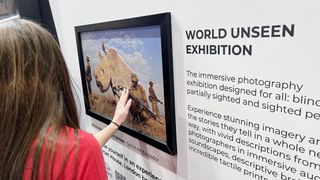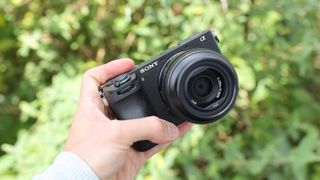
The Quick List ↩
1. Best everyday lens
2. Best wide-angle zoom
3. Best wide-angle prime
4. Best for portraits
5. Best superzoom
6. Best telephoto
7. Best for macro
How to choose
How we test
The Sony A6700 is the latest in a long line of A6000-series cameras from Sony. It’s the new top model, taking over from the previous Sony A6600 and inheriting the new 26MP sensor from the Sony FX30, together with many of that camera’s advanced video capabilities.
The Sony A6700 is not just a camera for video, however, offering excellent image quality for stills and all the benefits of Sony’s state of the art AF and AI subject recognition. As the top camera in the A6000 line-up, the A6700 also has in-body image stabilization – only Sony’s top APS-C models have this.
With those credentials, the Sony A6700 qualifies as one of the best hybrid cameras around right now, and perhaps one of the best vlogging cameras too. However, most of the best Sony lenses are for full-frame sensors, so the choice of dedicated APS-C E-mount optics is smaller. Having said that, Sony has gone to some lengths to build on its E-mount range to offer some professional-quality lenses amongst some more affordable options – and we’ve included a couple of full-frame FE-mount lenses which we think are a good match for the A6700.
So let’s get on with our list…
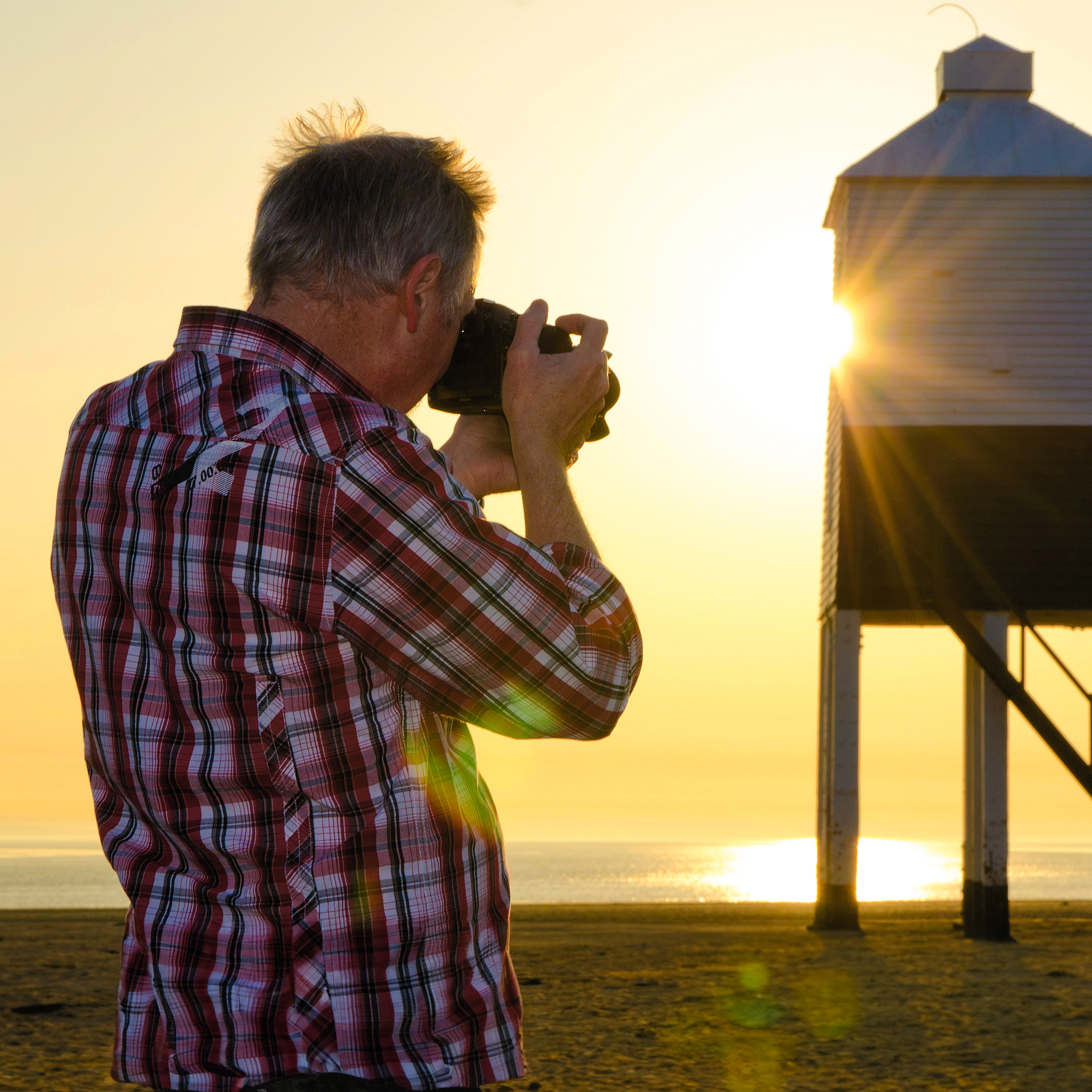
Rod is an independent photography journalist and editor, and a long-standing Digital Camera World contributor, having previously worked as DCW's Group Reviews Editor. He has used practically every interchangeable-lens camera launched in the past 20 years.
The Quick List
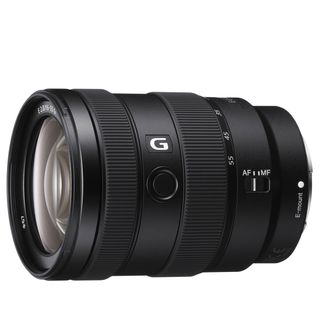
On the A6700, this lens reaches longer than a typical standard zoom, with a helpfully wide aperture and excellent center sharpness. Read more below…
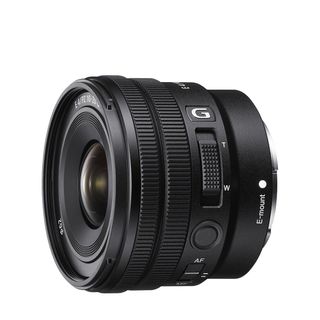
Wide-angle lenses aren’t just for capturing big scenes, although this does that well: features like the power zoom make this video-friendly. Read more below…
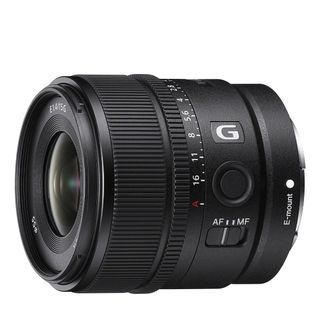
This prime gives you an equivalent focal length of 23mm on the A6700, ideal for landscapes and interiors, plus a physical aperture ring. Read more below…
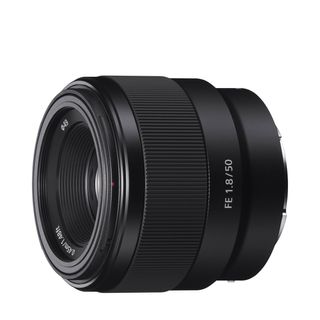
Adjusted for the A6700, this prime’s focal length is near-perfect for portraits, while the wide aperture and super sharpness deliver quality images. Read more below…
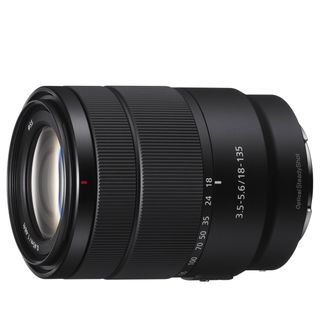
When a lens gives you a 7.5x zoom range without costing a great deal, you’d expect the quality to suffer – but this lens defies expectations. Read more below…
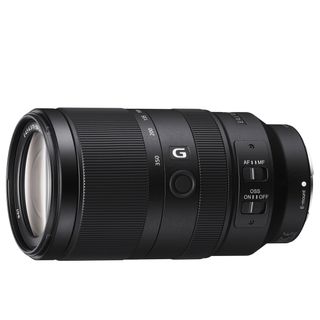
This zoom gets you closer to distant subjects, with a light build and strong optical performance we wouldn’t normally see at this price. Read more below…
View the full list ⤵
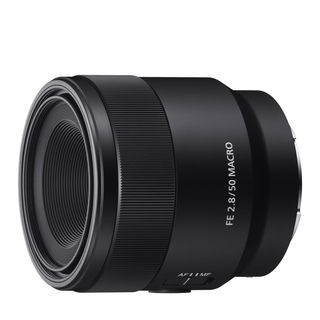
This prime brings you full-frame quality at an affordable price, with lifesize magnification to help you capture small-scale subjects. Read more below…
Best lenses for the Sony A6700 in 2024
Why you can trust Digital Camera World
Best everyday lens for the A6700
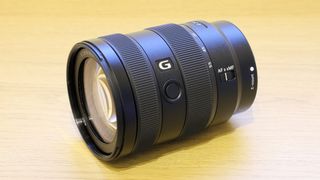
If you’re looking for the best standard zoom lens to go with the A6700, this is it. The E 16-55mm f/2.8 G offers an equivalent focal range of 24-83mm in full-frame camera terms, and the constant f/2.8 maximum aperture is just what professionals have come to expect from premium zooms.
On the downside, this lens is both heavy and expensive. The Sony A6700 is in itself relatively compact, so this combination will seem somewhat front-heavy. There’s also no in-built image stabilization – although this doesn’t matter particularly on the A6700, which has its own in-body stabilization. The center sharpness is excellent throughout, although the corner sharpness is only average at the longest zoom setting.
Read more: Sony E 16-55mm f/2.8 G review
Best wide-angle zoom for the A6700
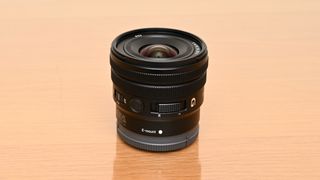
This new Sony E 10-20mm f/4 PZ G seems to have completely replaced the older Sony E 10-18mm f/4 OSS ultra-wide zoom, ditching optical stabilization in favor of a slight increase in the maximum focal length and a power zoom. This lens is clearly designed for the video/vlogging market, and its small size, light weight and wide angle of view (15-30mm equivalent) will make it perfect for use on a gimbal or grip for self-filming.
The optical performance is pretty outstanding too, so while the power zoom feature isn’t ideal for stills photography, this is still a highly desirable lens for photographers as well as filmmakers.
Read more: Sony E 10-20mm f/4 PZ G review
Best wide-angle prime for the A6700
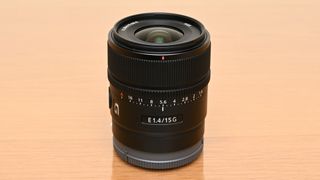
The E 15mm f/1.4 G is a fast prime lens, with a focal length equivalent to 23mm in full-frame terms and a generous maximum aperture of f/1.4. In addition to that wide aperture, this lens also has a physical aperture ring, which will please both videographers and stills photographers.
This would make a great wide-angle lens for travel and for low light, and while it is somewhat expensive, its optical performance is very good, even wide open at f/1.4. Like many Sony lenses, it relies on digital corrections, but these are applied in-camera and embedded in the raw files, so you’re not going to be any the wiser.
Read more: Sony E 15mm f/1.4 G review
Best portrait lens for the A6700
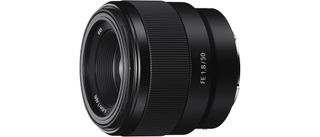
The FE 50mm f/1.8 is a ‘nifty fifty’ for Sony full-frame cameras, but on the A6700, it delivers an equivalent focal length of 75mm – which, in combination with its f/1.8 maximum aperture, makes this a great ‘portrait’ lens for this camera. The optical performance is impressive given this lens’s low cost, with very good center and edge sharpness if you stop down just a little and nice smooth bokeh when used wide open.
Read more: Sony FE 50mm f/1.8 review
Best superzoom lens for the A6700
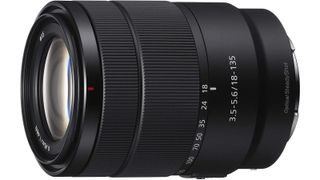
Normally, consumer-level ‘long’ standard zooms are pretty average in both performance and handling, but the Sony E 18-135mm f/3.5-5.6 OSS punches well above its weight. On the A6700, its equivalent focal length is 27-202mm, taking you from wide-angle to telephoto without needing to swap lenses. The definition does fall off a little at longer focal lengths, but by nowhere near as much as we’re used to seeing with lenses of this focal range; and while the maximum aperture does drop to f/5.6 at full zoom, that’s still better than a lot of newer zooms.
This lens also quite light, very neat in its profile and handling and just a really nice lens to use. It doesn’t have the performance or the pro credentials of the Sony E 16-55mm f/2.8 G, but it’s a lot cheaper and, it’s own way, rather more likeable.
Read more: Sony E 18-135mm f/3.5-5.6 OSS review
Best telephoto lens for the A6700
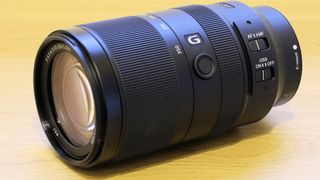
If you’re into sports and wildlife photography, you can choose from Sony’s range of full frame telephoto lenses and benefit from the extra reach of the Sony A6700’s smaller ‘crop’ sensor. The E 70-350mm f/4.5-6.3 G OSS is designed specifically for the APS-C format, so it’s a good deal cheaper and lighter – although these things are relative, and this is a fairly expensive lens given its relatively modest specifications. However, its optical performance is very good – certainly better than we’re used to seeing from ‘consumer’ telephoto zooms.
Read more: Sony E 70-350mm f/4.5-6.3 G OSS review
Best macro lens for the A6700
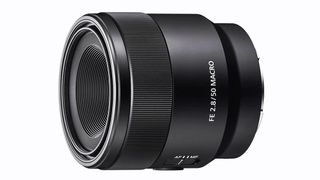
The FE 50mm f/2.8 Macro is designed as an affordable macro lens for Sony’s full-frame cameras, but it’s also a very interesting choice for the Sony A6700, where its effective 75mm focal length is no disadvantage at all – in fact, the smaller sensor size will make tiny subjects appear even bigger (although, in strict macro terms, the reproduction ratio is still 1:1). The only thing against it for general use, we discovered, is that the autofocus is not very fast.
Read more: Sony FE 50mm f/2.8 Macro review
How to choose the best lens for the Sony A6700
The A6700, like all A6000-series cameras, uses the Sony E lens mount. Sony’s own E-mount lenses have either FE or E in their model names: all work on the A6700. Very broadly speaking, an FE lens will be heavier and more expensive than an equivalent E lens, but deliver better image quality. E lenses (again very broadly) will tend to be smaller and lighter.
For shooting at shorter focal lengths and wider angles of view – specifically kit lenses or ultra-wide zooms – you are probably better off with an E lens. The APS-C crop factor of the A6700 means that FE lenses offer a reduced angle of view, curtailing their wide-angle capability with the smaller sensor.
If you are buying a third-party E-mount lens, check whether the lens is designed for use with APS-C Sony cameras like the A6700, or with full-frame Sonys.
Check out our guide to the best Sony lenses if you want to know more
How we test lenses
The lens experts in our testing lab run a range of tests under controlled conditions, using the Imatest Master testing suite. Photos of test charts are taken across the range of apertures and zooms (where available), then analyzed for sharpness, distortion and chromatic aberrations.
We use Imatest SFR (spatial frequency response) charts and analysis software to plot lens resolution at the centre of the image frame, corners and mid-point distances, across the range of aperture settings and, with zoom lenses, at four different focal lengths.
There's more to it than just the technical side, though! Beyond the lab, our reviewers test lenses in real-world environments – and sometimes on professional shoots! We work with lenses both indoors and outdoors, in studio conditions and in natural light, with as many different subjects as is possible (or appropriate – there's no point testing a landscape lens' ability to shoot a portrait!).
We take into account everything from handling and ease of use to speed of autofocus and the overall quality of the images produced.
Find out more about how we test and review on Digital Camera World

